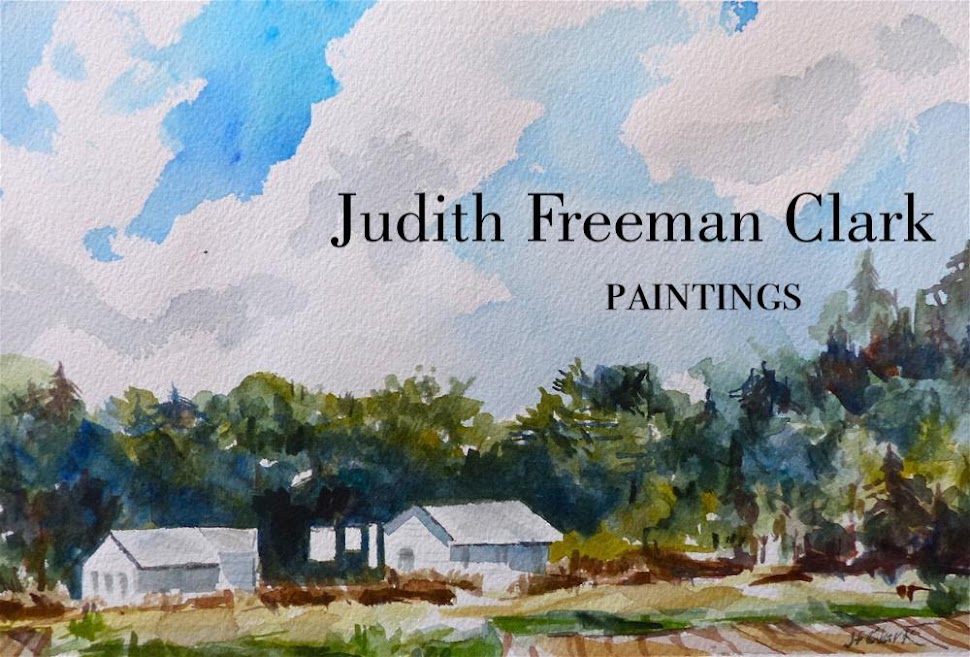Fans of "Downton Abbey" may remember Inveraray Castle, in Argyll, which was featured as cousin Rose's home. Inveraray is situated along Loch Fyne, and is about as picturesque as it gets for subjects like this. However, a close second is Eilean Donan -- a 13th century pile also located in the western reaches of Scotland, somewhat north of Inveraray Castle.
My painting, "Highland Fortress," is based loosely on images of Eilean Donan, although I've taken artistic license with location and some of the details. My goal was to capture the romantic ambiance of this beautiful, but rugged, area of Scotland, and to indulge my love for this region.
 |
| 1. Pencil outline of castle, causeway, and mountain. Adding a wash of two blues to show the sky and clouds. |
I let the paper dry completely before moving to the next step -- adding rough brushstrokes (using a 1/4" flat brush) to represent the land and some foliage.
 |
| 2. Defining the land and marking the waterline of the loch. |
 |
| 3. Adding mountain shapes |
I layered a dark green over a lighter, green-gold, to indicate a forest-covered mountainous area on the far right. Using a green-gold underpainting in this way helped suggest the sunlight filtering down into the craggy, shadowy areas of the loch.
Shadows further defined the structure of the castle and the causeway. I built up the foliage in the foreground using a dry brush (again, my 1/4" flat) loaded, alternately, with full-strength pigments: shadow green, ultramarine blue, sepia, and burnt sienna.
 |
| 4. Blocking in the castle and causeway, and adding the deep forested area at right. |
 |
| 5. Building up shadows adds depth to the scene. |
 |
| 6. Continued work on the foliage at the castle base. |
Dampening the entire area at the bottom of the painting prepared the surface of the paper so I could paint the loch in the foreground. I let the paper dry a bit after wetting it so the pigment wouldn't disperse too completely. It can be a challenge, when working on a damp surface, to add the right amount of color to define the reflections, yet to preserve the transparency of the water. I used a 3/4" flat brush to paint the loch.
 |
| 7. Adding reflections in the water of the loch showed that the castle needed to be rendered in darker values. |
After assessing the impact (or lack of it!) the the focal point (castle and causeway in the middle ground) I continued to deepen the shadows of both. My goal at this point was to bring those structures forward, to heighten the sense of depth in the scene. I also added more color to the reflections, and to the mountains, as can be seen in the final version (below).
Pay attention to the "fade factor..."
On paper, watercolors appear about 30% darker when they are wet. After a painting dries, everything is lighter. So if you want bold, rich colors you have to pile on the pigment.
Practice. Experiment. Use up a lot of paper and paint. Eventually you figure it out........
 |
| "Highland Reflections "9" x 12" SOLD |

No comments:
Post a Comment